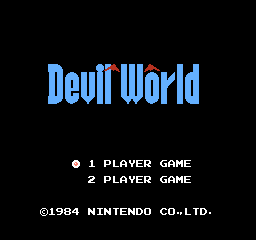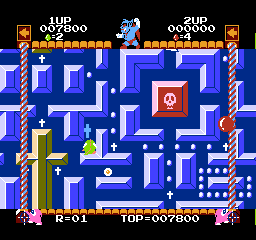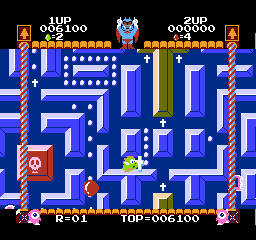While the Nintendo certainly wasn’t the first video game system, during its run, video games were still a relatively new arrival to the arena of personal entertainment. The issue of media censorship as anything from necessary evil to patriotic duty still came up in the United States, and even with media-friendly video-game-loving Reagan in the White House, it was clear that combating any PR snafu would be an uphill battle.
Nintendo’s headquarters in Japan had already instituted strict guidelines for their video games prohibiting sexual imagery, but Nintendo of America took this all a step further and released strict overarching content guidelines that included things like prohibitions against depictions of domestic violence, drug or alcohol use and, most notably, religious imagery. Though exceptions were allowed for video games such as Castlevania (which has crosses), Ghosts ‘n’ Goblins and a few others that may have been intentional or may have simply slipped in under the radar, the general rule was obeyed to the extent that crosses were on some occasions removed from tombstones and other only vaguely religious depictions.
As such, a game in which you are a green monster using crosses and Bibles to combat a speedo-clad Satan would be a hard sell to say the least.
Devil World

Devil World is a puzzle game in which you take the role of a small green creature (possibly an angel, and certainly a better depiction thereof than Chubby Cherub) who must do battle with the Lord of Darkness himself. The game takes place on a map reminiscent of Pac Man’s, and a casual observer might presume that the rules are the same. There are, however, a few major differences. For one, Satan commands the boundaries of the map, which move to accommodate different portions of the whole map, which is as large as or larger than an entire screen, depending on the level. Another is that pellets can only be collected whilst holding a cross, which also allows the lizard-angel-demon you control to belch fire.

Although the religious imagery is prevalent, it seems as though they could have swapped the graphics to something more America-friendly, as was done with Super Mario Bros 2 / Doki Doki Panic, leaving the gameplay largely – if not entirely – unchanged. Why wasn’t this done? Who knows? It could be that the creator was too deeply invested in the original story and couldn’t bear to remove the speedo-wearing Devil and Bibles and crosses. At the time, Christianity, while not rare or unheard of in Japan, still had an exotic Western feel to it (which prevails even to this very day, with works like Neon Genesis Evangelion (1995) or the bizarrely un-Catholic Catholic school from Haganai (2011)), so perhaps it was feared that the factor that made the game unique would ultimately be lost if the imagery were removed. The gameplay is pretty much what you would expect. The controls are functional and intuitive, albeit simple, and the game allows for simultaneous multiplayer – always a plus.

John’s Rating: 3.5 out of 5.0. There’s nothing particularly special about the game (apart from the novelty factor of playing a forbidden video game), but it’s an enjoyable romp through hell, especially if you bring a friend.